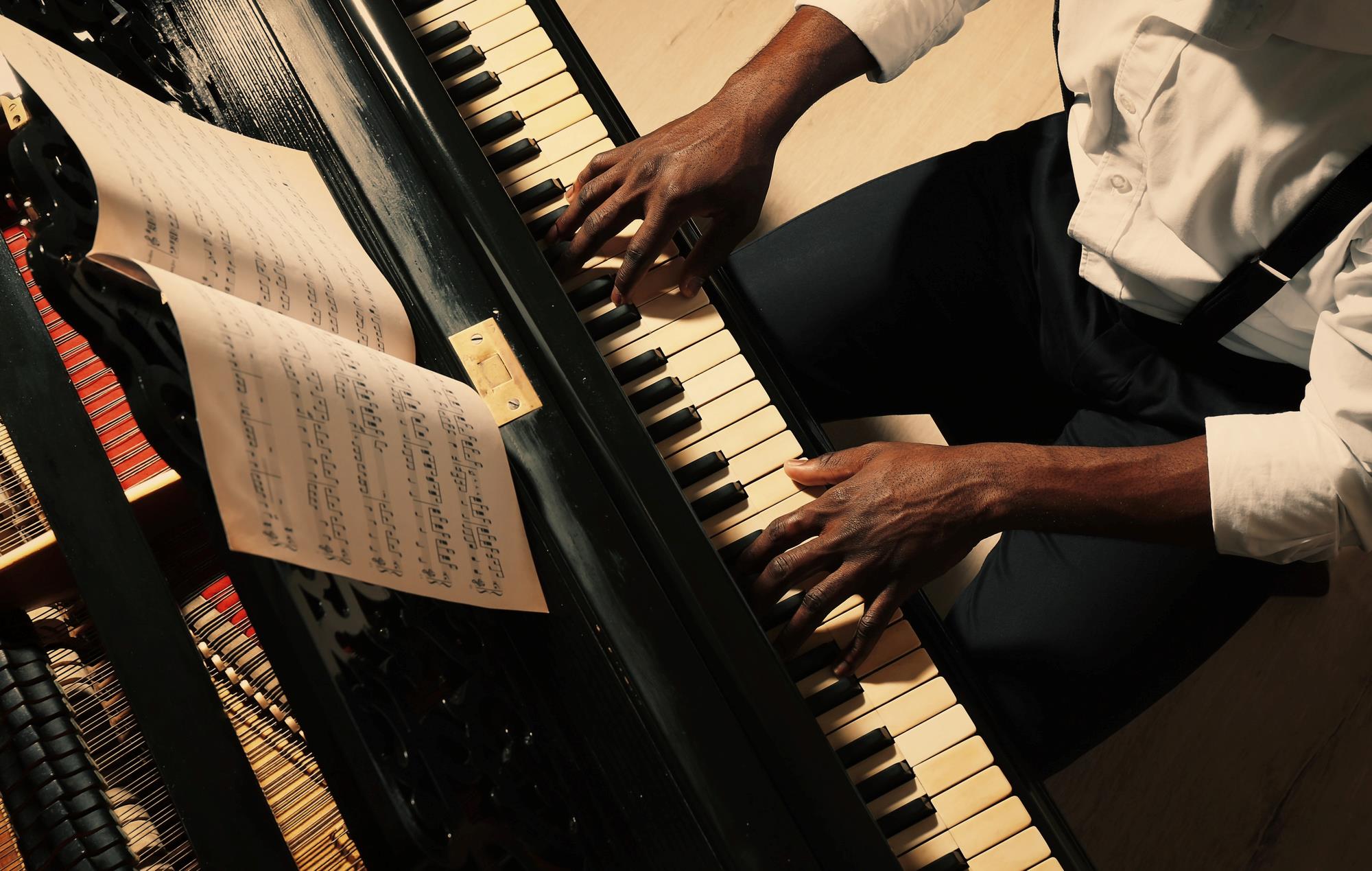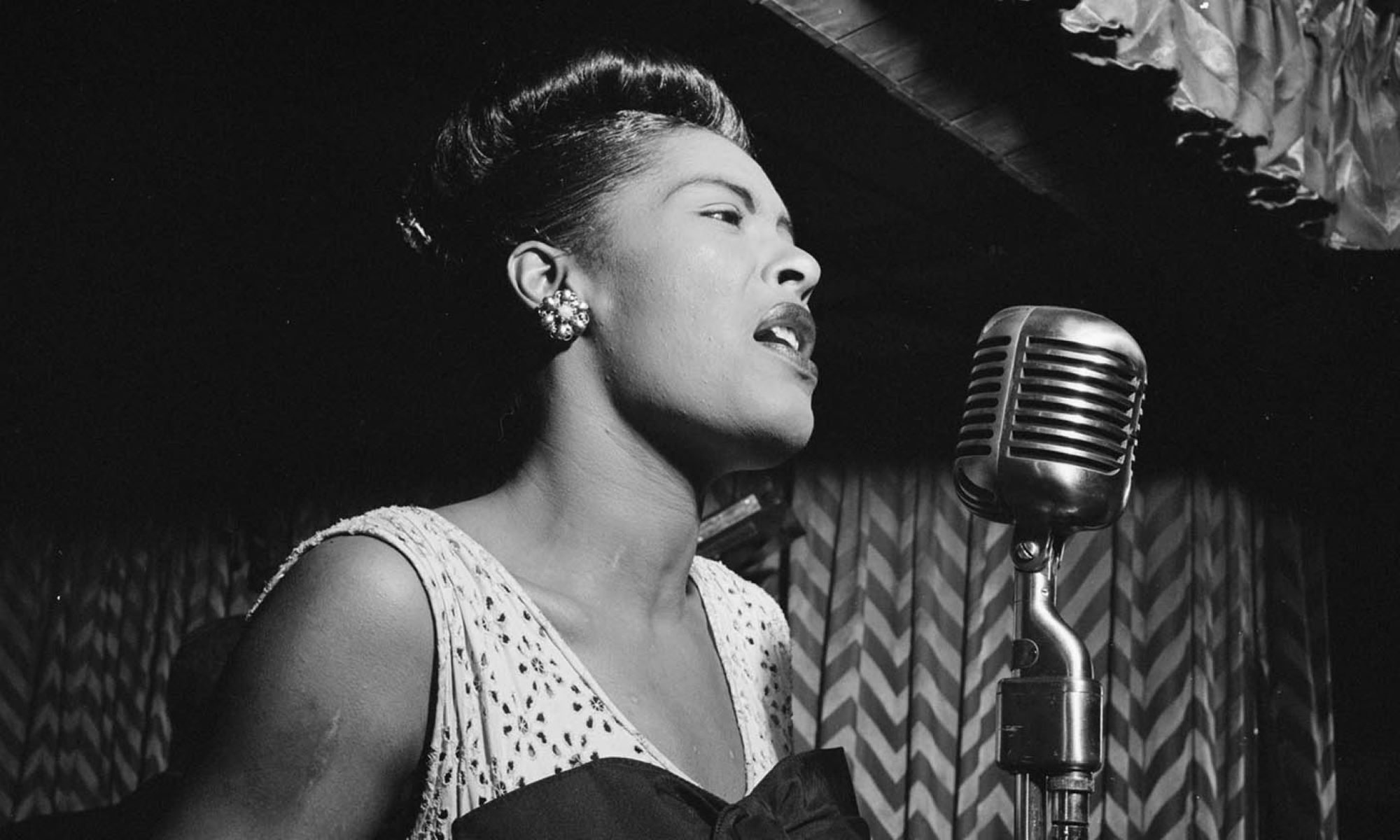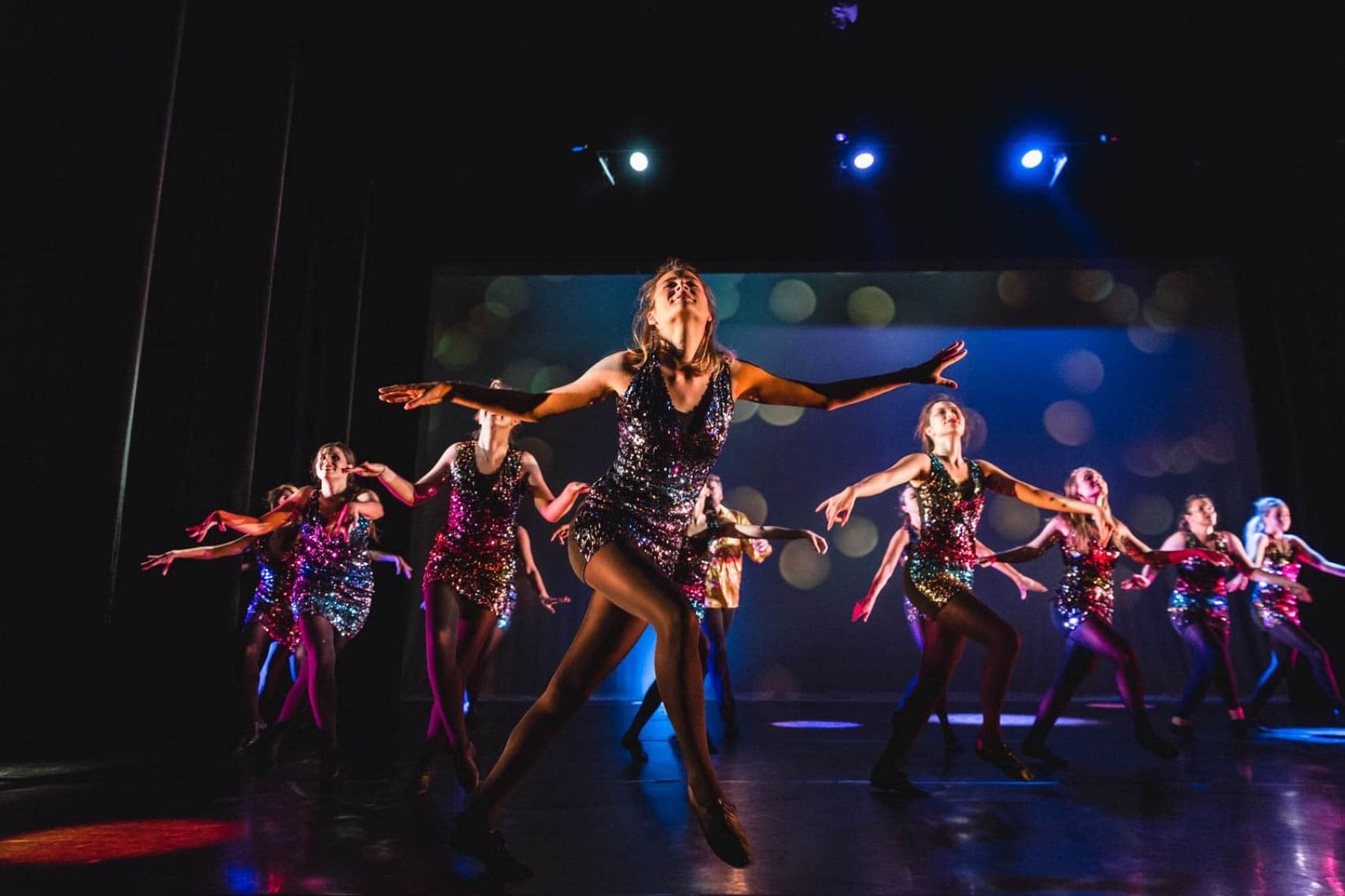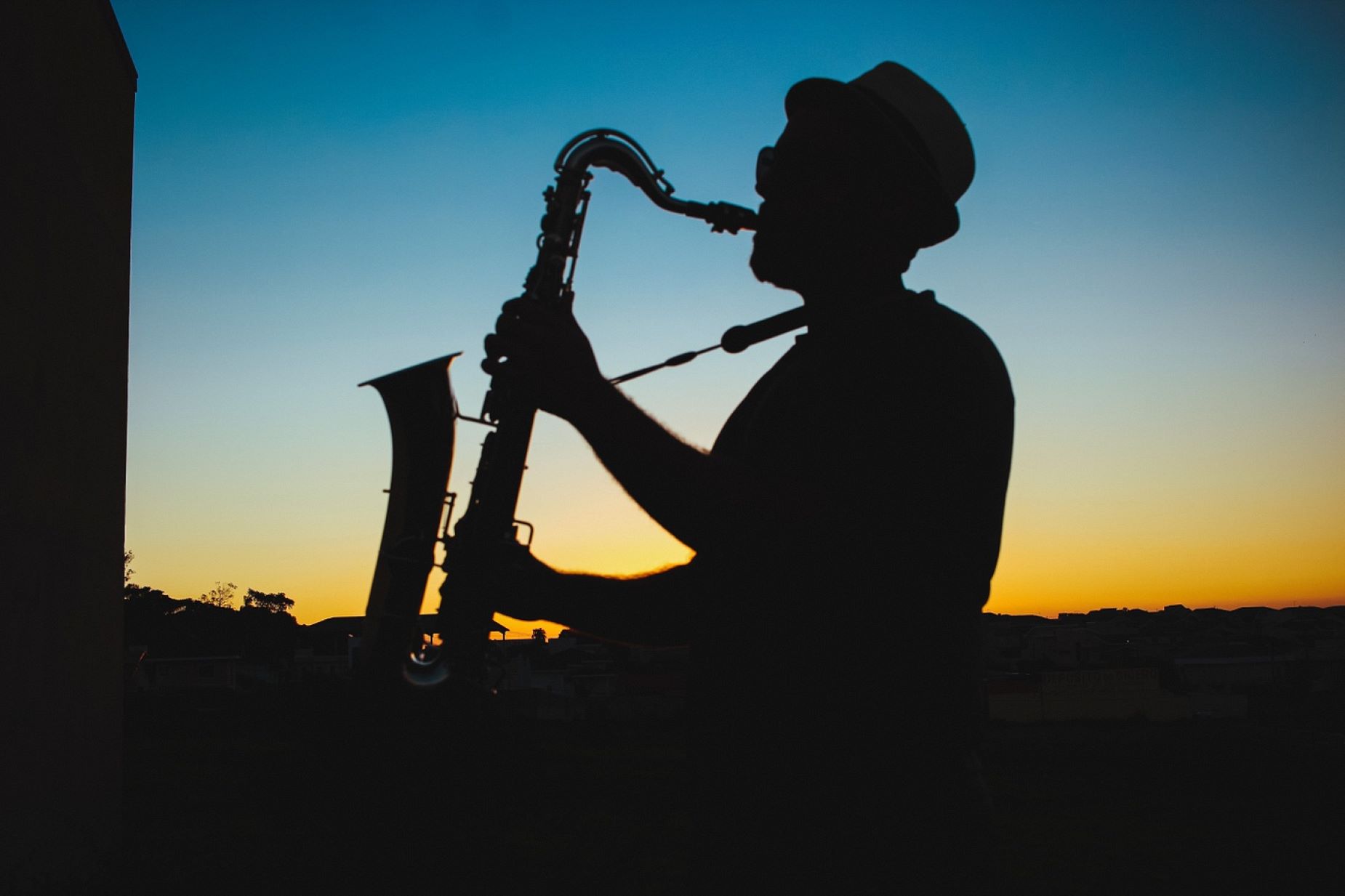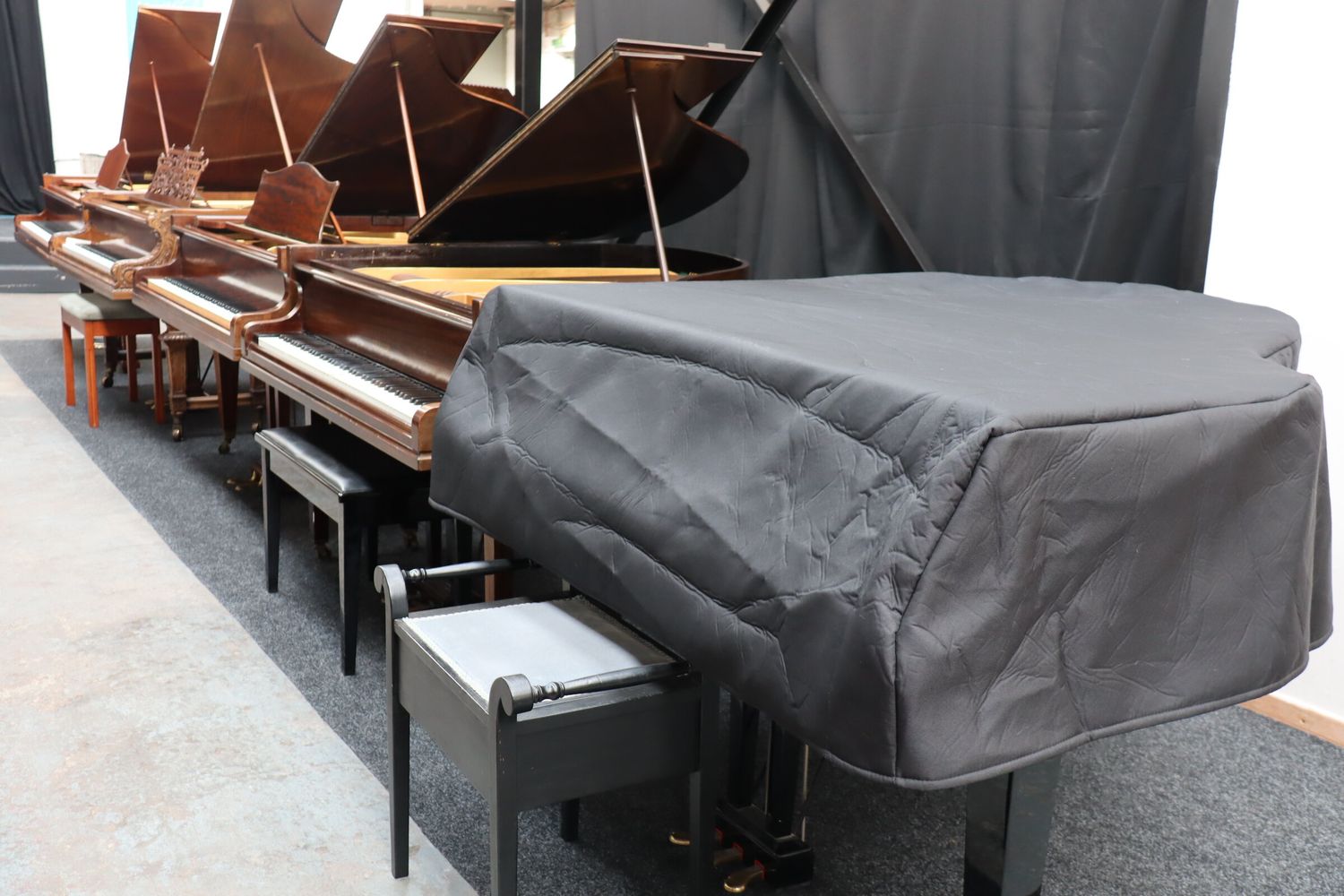

Jazz
How To Improvise Jazz Piano
Modified: January 22, 2024
Learn how to improvise jazz piano with our comprehensive guide. Explore different jazz styles, techniques, and chord progressions to enhance your playing skills.
(Many of the links in this article redirect to a specific reviewed product. Your purchase of these products through affiliate links helps to generate commission for AudioLover.com, at no extra cost. Learn more)
Table of Contents
- Introduction
- Understanding Jazz Piano
- Developing Basic Piano Technique
- Building Jazz Vocabulary
- Learning Jazz Harmony
- Mastering Jazz Rhythms and Articulations
- Exploring Improvisational Concepts
- Applying Jazz Theory to Improvisation
- Developing Ear Training and Transcription Skills
- Practicing and Developing Improvisation Techniques
- Tips for Performance and Collaboration
- Conclusion
Introduction
Music has the power to transcend boundaries, stir emotions, and ignite our souls. And within the realm of music, jazz holds a special place. Jazz, with its rich history and unique blend of improvisation, rhythm, and harmony, has captured the hearts of music lovers for generations. One of the most enchanting aspects of jazz is jazz piano, an instrument that has the ability to tell stories, convey emotions, and transport listeners to a whole different world.
But mastering jazz piano and the art of improvisation is no easy task. It requires a deep understanding of the genre, strong technical skills, and a creative mindset. In this article, we will delve into the world of jazz piano improvisation and explore the keys to unlocking your potential as a jazz pianist.
Whether you’re a beginner pianist looking to dip your toes into the world of jazz or an experienced musician seeking to hone your improvisational skills, this article will provide you with a comprehensive guide to improvising jazz piano. We will cover everything from building basic technique to developing a jazz vocabulary, understanding jazz harmony, and mastering jazz rhythms and articulations. Along the way, we’ll also explore improvisational concepts, apply jazz theory to improvisation, and develop ear training and transcription skills.
Improvisation is at the heart of jazz, and as a jazz pianist, it’s important to have the tools and knowledge to confidently express yourself through improvisation. Through practicing and developing improvisation techniques, as well as tips for performance and collaboration, you’ll be equipped with the skills to take the stage and create mesmerizing musical moments.
So, let’s embark on this jazz piano journey together! Whether you’re looking to entertain friends and family with some impromptu jazz tunes or dreaming of performing on stage alongside jazz greats, this article will serve as your roadmap to unlocking the world of jazz piano improvisation.
Understanding Jazz Piano
Jazz piano is a unique and beautiful form of musical expression that combines elements of traditional piano playing with the improvisational nature of jazz. Unlike classical piano, which typically follows a written score, jazz piano allows for spontaneity and personal interpretation. It’s a style that encourages creativity, exploration, and individuality.
At the core of jazz piano lies the concept of improvisation. Improvisation involves creating and playing music in the moment, without relying on pre-written compositions. Jazz pianists use their knowledge of music theory, harmony, and technique to spontaneously construct melodies, harmonies, and rhythms that fit within the framework of the music being played.
To truly understand jazz piano, it’s essential to familiarize yourself with the history and characteristics of jazz. Jazz originated in the early 20th century in African American communities, blending African and European musical traditions. It has since evolved into various subgenres and styles, including swing, bebop, cool jazz, and fusion.
One of the defining features of jazz piano is its rhythmic complexity and syncopation. Jazz pianists often incorporate syncopated rhythms, accents on offbeats, and various rhythmic patterns to create a unique sense of groove and pulse. They skillfully navigate through different chord progressions, using chord voicings and substitutions to add color and texture to their playing.
Another crucial aspect of jazz piano is its harmony. Jazz harmony is characterized by extended chords, such as seventh, ninth, and eleventh chords, and the use of chord substitutions and reharmonizations. Understanding jazz harmony allows pianists to create interesting and sophisticated chord progressions that provide a solid foundation for improvisation.
In addition to rhythm and harmony, jazz piano incorporates influences from blues and gospel music. These genres have deeply influenced the language and feel of jazz, adding soulfulness, emotion, and expressiveness to the music. Pianists can infuse their playing with elements of blues and gospel to bring depth and authenticity to their improvisations.
Lastly, it’s important to mention the role of the pianist in a jazz ensemble. A jazz pianist often serves as the backbone and harmony provider, supporting the other musicians and driving the rhythm section. They have the freedom to take solos, comp (accompany) for other soloists, and engage in musical conversations with their fellow band members.
Understanding jazz piano involves immersing oneself in the history, language, and techniques of the genre. By studying the great jazz pianists of the past and present, listening attentively to jazz recordings, and practicing diligently, aspiring jazz pianists can develop the skills and musical sensibility necessary to navigate the enchanting world of jazz piano improvisation.
Developing Basic Piano Technique
Before diving into the world of jazz piano improvisation, it’s essential to have a solid foundation of basic piano technique. Developing good technique will not only enhance your playing but also enable you to express yourself more effectively on the instrument. Here are some key areas to focus on when developing your basic piano technique:
- Hand Position: Begin by establishing a relaxed and natural hand position. Keep your fingers curved and rested over the keys, with your wrists level and not too tense or rigid. This optimal hand position will allow for greater control and dexterity when playing.
- Finger Independence: Work on developing finger independence by practicing various exercises and drills. This will enable you to play different notes simultaneously and perform more intricate melodies and chords.
- Technique Exercises: Incorporate technical exercises into your practice routine to strengthen your fingers, improve finger agility, and build muscle memory. Scales, arpeggios, and Hanon exercises are all effective in developing technique.
- Dynamics: Practice playing with a range of dynamics, from soft to loud, to bring out the nuances and emotions in your playing. Explore different touch varieties, such as staccato, legato, and accenting, to add depth and expression to your playing.
- Controlled Pedaling: Learn how to use the damper pedal effectively. Experiment with half-pedaling and different pedal techniques to enhance the sustain and resonance of the piano without muddying the sound.
- Posture and Relaxation: Maintain good posture while playing, sitting at an appropriate height with your back straight. Avoid unnecessary tension in your hands, arms, and shoulders by staying relaxed and using only the required amount of force when striking the keys.
As you work on developing your basic piano technique, be patient and persistent. Consistent practice and attention to detail will gradually improve your playing and set the stage for more advanced jazz piano techniques. Remember to start slow and gradually increase your speed and complexity as you become more comfortable.
Furthermore, listening to and studying recordings of jazz piano greats will provide valuable insight into their technical approach and stylistic choices. Analyze their hand positions, phrasing, and use of dynamics to emulate their techniques and create your own unique voice on the instrument.
By focusing on these fundamental aspects of piano technique, you will lay a strong foundation for your jazz piano journey. Having a solid technical base will give you the freedom and confidence to explore more complex harmonies, rhythms, and improvisational concepts in the realm of jazz piano improvisation.
Building Jazz Vocabulary
Building a jazz vocabulary is essential for any aspiring jazz pianist looking to improvise with confidence and fluency. Jazz vocabulary refers to the collection of musical ideas, patterns, motifs, and licks that are often used in jazz improvisation. By developing a strong jazz vocabulary, you will have a foundation of melodic and harmonic ideas to draw from when creating your own improvisations. Here are some strategies to help you build your jazz vocabulary:
- Transcribe and Analyze Jazz Solos: One of the most effective ways to build your jazz vocabulary is by transcribing solos from jazz piano masters. Choose solos that resonate with you and carefully listen to them, deciphering the melodic lines, rhythmic patterns, and harmonic choices. Analyzing these solos will give you insights into the improvisational mindset and language of accomplished jazz pianists.
- Learn and Practice Jazz Standards: Jazz standards are timeless compositions that serve as the playground for jazz improvisation. Familiarize yourself with the melodies, chord progressions, and harmonic structures of popular jazz standards. Analyze the melodic and harmonic choices of the original recordings and experiment with different improvisational approaches over these tunes.
- Internalize Common Jazz Chord Progressions: Jazz often revolves around specific chord progressions like the ii-V-I, blues progressions, and modal tunes. Practice playing these progressions in different keys and experiment with various voicings and chord inversions. As you become familiar with these progressions, you will start to intuitively incorporate them into your improvisations.
- Explore Jazz Scales and Modes: Jazz pianists employ a variety of scales and modes to create melodic lines and harmonies in their improvisations. Learn and practice scales such as the major, minor, pentatonic, blues, and modes like Dorian, Mixolydian, and Lydian. Experiment with different scale patterns and connect them to the corresponding chords to expand your improvisational possibilities.
- Develop Motivic Development: Motives are short melodic or rhythmic ideas that can be developed and expanded upon throughout an improvisation. Practice creating motifs and transforming them by altering the rhythm, starting on different notes, or changing the intervals. Incorporating motifs in your improvisations will give your playing coherence and a strong sense of musicality.
Building a jazz vocabulary is an ongoing process that requires dedication and regular practice. As you accumulate a repertoire of melodic and harmonic ideas, aim to internalize and internalize them in different keys, tempos, and contexts. Strive for fluency and versatility by incorporating these musical ideas into your playing organically, rather than relying on them as mere musical clichés.
Remember, building a jazz vocabulary is not about mimicking other musicians, but rather about assimilating their ideas and incorporating them into your own musical voice. As you integrate these musical elements into your improvisations, strive to add your personal touch and expressiveness.
By developing a robust jazz vocabulary, you will have a strong musical foundation to draw from when improvising on jazz standards and engaging in musical conversations with other musicians. These musical ideas will serve as a launching pad for your creativity, allowing you to express yourself authentically and confidently as a jazz pianist.
Learning Jazz Harmony
Jazz harmony is a crucial aspect of jazz piano improvisation. Understanding and navigating the harmonic landscape is essential for creating interesting and compelling improvisations. Jazz harmony involves the study of chords, chord progressions, and harmonic substitutions that form the foundation of jazz compositions. Here are some steps to help you learn jazz harmony:
- Study Basic Chords: Start by learning the basic chords used in jazz, such as major and minor triads, dominant seventh chords, major seventh chords, and minor seventh chords. Practice playing these chords in different inversions and voicings to develop your technique and familiarity.
- Explore Extended Chords and Altered Tones: Move beyond the basic chords and explore extended chords, like ninth, eleventh, and thirteenth chords. Learn how to incorporate altered tones, such as sharps and flats, to add color and tension to your chord progressions. Experiment with different voicings and inversions to achieve interesting harmonic sounds.
- Analyze Jazz Standards: Choose jazz standards and analyze their chord progressions. Pay attention to the functional harmony, chord substitutions, and chord progressions used in these songs. Understanding the harmonic choices made by composers and arrangers will expand your vocabulary and provide insight into effective harmonic movement.
- Learn Common Jazz Progressions: Jazz has a repertoire of common chord progressions that appear in numerous songs. Practice playing progressions like the ii-V-I, ii-V, and blues progressions in different keys and styles. This will help you internalize these progressions and incorporate them seamlessly into your improvisations.
- Experiment with Reharmonization: Reharmonization involves altering the harmony of a song by replacing chords with substitutions or adding new chords. Experiment with reharmonization techniques to create fresh and unique harmonic textures in your improvisations. This will also enhance your understanding of chord function and give you more options for harmonic expression.
- Practice Voice Leading: Voice leading refers to the smooth and melodic movement of individual voices within a chord progression. Practice maintaining strong voice leading in your chord voicings, ensuring that each note moves smoothly to the next chord. This will create a pleasing and cohesive sound in your improvisations.
As you learn jazz harmony, it’s also important to actively listen to jazz recordings, paying attention to the harmonic choices of the musicians. Train your ears to recognize chord progressions, chord substitutions, and the overall harmonic structure of the music. This will deepen your understanding of jazz harmony and help you incorporate it into your improvisations more intuitively.
Learning jazz harmony is an ongoing process, and it requires dedication and practice. Incorporate harmonic exercises, like playing through chord progressions and analyzing jazz standards, into your daily practice routine. Additionally, seek guidance from jazz pianists or teachers who can provide valuable insights and feedback on your harmonic understanding and application.
By mastering jazz harmony, you’ll be equipped with the knowledge and tools to navigate the intricate harmonic landscape of jazz piano improvisation. It will open up endless possibilities for creative expression and allow you to create captivating and compelling jazz improvisations.
Mastering Jazz Rhythms and Articulations
When it comes to jazz piano improvisation, mastering jazz rhythms and articulations is paramount. Jazz is known for its intricate and syncopated rhythms, as well as its unique articulation techniques that give the music its distinct flavor. Here are some strategies to help you excel in jazz rhythms and articulations:
- Internalize Swing Feel: Swing feel is the rhythmic foundation of jazz. It’s a style of playing that infuses a triplet-based swing rhythm into the music. Work on internalizing and feeling the swing rhythm by practicing various swing patterns and swinging eighth-note exercises. Listen to recordings of jazz legends to reinforce your understanding of swing feel.
- Study Different Jazz Rhythms: Jazz encompasses a wide range of rhythmic styles, including straight eighths, latin rhythms, bossa nova, and more. Dive into the different rhythmic styles of jazz and practice playing them authentically. Experiment with syncopation, accents, and offbeat phrasing to add rhythmic interest and complexity to your playing.
- Practice Rhythmic Exercises: Dedicate time to practice rhythmic exercises that focus on syncopation, displacement, and polymeter. These exercises will challenge your sense of time and improve your ability to navigate complex rhythmic patterns. Working with a metronome and gradually increasing the tempo will help you build precision and accuracy in your rhythmic execution.
- Explore Articulation Techniques: Jazz piano articulation techniques involve how you attack and release each note. Experiment with various articulations, such as staccato, legato, accenting, and ghosting. These techniques will add texture and depth to your playing and help you shape and emphasize specific notes or phrases in your improvisations.
- Transcribe Rhythmic Patterns: Transcribe rhythmic patterns and comping styles from recordings of renowned jazz pianists. Analyze their rhythmic choices, note placements, and accents. By transcribing and incorporating these rhythmic patterns into your playing, you’ll expand your rhythmic vocabulary and develop a strong sense of groove and phrasing.
- Collaborate with Other Musicians: Playing with other musicians is an excellent way to develop your jazz rhythm skills. Collaborate with drummers, bassists, and other instrumentalists to better understand the rhythmic interactions and dynamics within a jazz ensemble. This will sharpen your listening skills and train you to lock in with the rhythm section.
Remember, mastering jazz rhythms and articulations takes time and effort. Be patient with yourself and focus on consistent practice. Start by practicing rhythms slowly and gradually increase the tempo as you become more comfortable.
As you develop your jazz rhythm skills, listen to and study recordings of jazz greats. Pay attention to their rhythmic choices, syncopations, and the overall rhythmic flow of their playing. Internalizing the rhythmic concepts and nuances of experienced jazz musicians will greatly influence and enhance your own rhythmic improvisations.
By mastering jazz rhythms and articulations, you’ll be able to create captivating and infectious grooves in your jazz piano improvisations. Your playing will have a sense of rhythmic flair and authenticity that will captivate listeners and transport them into the vibrant world of jazz.
Exploring Improvisational Concepts
Improvisation lies at the heart of jazz piano, providing the freedom to spontaneously create melodies and harmonies. Exploring improvisational concepts will allow you to develop your own unique voice and expressiveness on the instrument. Here are some important concepts to explore as you delve into jazz piano improvisation:
- Call and Response: Call and response is a common improvisational technique in jazz. It involves creating a musical phrase (call) and then responding to it with another phrase. Experiment with different call and response patterns, exploring the interplay between your left and right hand, as well as between different voices within the music.
- Tension and Release: Jazz improvisation often involves creating and resolving tension within the music. Practice using tension-building techniques like chromaticism, dissonance, and altered tones, and resolve them harmonically or melodically. This will add dramatic and expressive elements to your improvisations.
- Motivic Development: Motivic development is the process of taking a melodic motif or idea and expanding upon it throughout your improvisation. Experiment with creating motifs and developing them rhythmically, melodically, and harmonically. This technique adds cohesion and structure to your solos and allows for cohesive storytelling within your improvisation.
- Emotional Expression: Jazz piano improvisation is not only about playing the correct notes and chords but also about conveying emotion and connecting with the listener. Explore different ways to express emotions through your playing, whether it’s through dynamics, phrasing, or infusing your improvisation with personal experiences and feelings.
- Exploring Different Scales and Modes: Expand your harmonic and melodic palette by exploring different scales and modes. Experiment with modal improvisation, using scales like the Dorian, Mixolydian, and Lydian modes. Incorporate chromatic passing tones and explore the harmonic possibilities of diminished and whole-tone scales. This will add color and variety to your improvisations.
- Listen and React: Improvisation is not only about playing your own ideas but also about actively listening and responding to what is happening in the moment. Practice listening to the other musicians in your ensemble, and react to their ideas and phrases. This interactive approach to improvisation creates an engaging musical conversation among the musicians.
As you explore these improvisational concepts, it’s important to immerse yourself in the music of various jazz pianists. Listen to recordings of jazz legends, studying their improvisational approaches and techniques. Pay attention to their use of space, rhythm, dynamics, and storytelling within their solos. Absorbing the language of experienced jazz pianists will inspire and inform your own improvisational style.
Remember, improvisation is an art form that requires practice, experimentation, and a willingness to take risks. Embrace the process of exploration and discovery, and allow your improvisations to evolve naturally over time. Trust your instincts and have the confidence to let your musical voice shine through.
By exploring improvisational concepts, you will unlock the true essence of jazz piano improvisation. You’ll develop the ability to express yourself authentically, create engaging and captivating solos, and connect with the music on a deeper level, both as a performer and as a listener.
Applying Jazz Theory to Improvisation
Jazz theory provides a roadmap for understanding and navigating the complex harmonic structure of jazz music. Applying jazz theory to improvisation will give you the tools and knowledge to make informed musical choices, create melodic lines, and harmonize with confidence. Here are some essential ways to apply jazz theory to your improvisation:
- Chord-Scale Relationships: Understanding the relationship between chords and scales is crucial in jazz improvisation. Each chord has a corresponding scale that can be used to create melodic lines. Practice identifying the appropriate scale for each chord type and experiment with using different scales to improvise over chords.
- Targeting Chord Tones: Targeting chord tones is an effective way to create a strong harmonic connection in your improvisation. Focus on hitting chord tones (root, 3rd, 5th, 7th) on important beats and resolving to them when navigating through chord progressions. This will give your improvisation a clear and harmonically grounded structure.
- Guide Tones: Guide tones are the 3rd and 7th of a chord and are often used to outline the harmonic structure. Practice incorporating guide tones into your improvisation, connecting them smoothly and seamlessly with passing tones. Guide tones provide a strong sense of direction and help create melodic tension and resolution.
- Arpeggios and Enclosures: Arpeggios are the individual notes of a chord played in sequence. Practice playing arpeggios of different chord types and explore ways to incorporate them into your improvisation, emphasizing chord tones. Additionally, experiment with enclosures, which involve approaching a target note from both sides with adjacent scale tones to add melodic interest and creativity.
- Passing Chords and Substitutions: Learn about passing chords and chord substitutions to add color and variation to your improvisation. Experiment with substituting chords with related chord types, such as tritone substitutions or modal interchange. This will add harmonic depth and create unique melodic possibilities.
- Rhythmic Variations: Apply jazz theory to your rhythmic approach. Experiment with syncopation, offbeat phrasing, and rhythmic motifs to create rhythmic interest and energy in your improvisation. Develop a sense of rhythmic freedom while still maintaining a strong pulse and connection to the underlying beat.
As you apply jazz theory to your improvisation, it’s important to strike a balance between using theoretical concepts and relying on your ears and musical intuition. Jazz theory provides a framework, but ultimately, the goal is to create music that sounds natural and expressive.
Transcribe and analyze the solos of jazz pianists who have a strong grasp of jazz theory. Listen and study how they navigate chord progressions, use scales, and incorporate various theoretical concepts into their improvisations. This will serve as a source of inspiration and help solidify your understanding of applying jazz theory in a musical context.
Remember that jazz theory is a powerful tool, but it should never limit your creativity or musical expression. The goal is to internalize the theory and use it as a springboard for your own personal style and improvisational voice. Embrace the balance between theory and improvisation, allowing your musical instincts and creativity to guide your improvisational choices.
By applying jazz theory to your improvisation, you’ll gain a deeper understanding of the harmonic language of jazz and have the ability to explore more sophisticated melodic and harmonic possibilities. Your improvisations will become more informed, nuanced, and musically compelling, captivating both yourself and your audience.
Developing Ear Training and Transcription Skills
Ear training and transcription are vital skills for any jazz pianist looking to excel in improvisation. These skills enable you to accurately hear and interpret music, allowing you to transcribe solos and melodies, understand chord progressions, and develop a deep musical understanding. Here are some strategies to develop your ear training and transcription skills:
- Melodic Dictation: Practice melodic dictation by listening to short musical phrases and transcribing them on your instrument. This will train your ears to recognize intervals, melodic contours, and musical patterns. Start with simple tunes and gradually move on to more complex melodies.
- Transcribing Solos: Choose recordings of your favorite jazz pianists and transcribe their solos. Start with short phrases and gradually work your way towards transcribing entire solos. This process will improve your understanding of melodic and harmonic choices, phrasing, and overall musicality.
- Chord Recognition: Train your ears to recognize different chord types and progressions. Practice identifying chord qualities (major, minor, dominant, etc.) and their inversions. Listen to jazz recordings and try to identify the chords being played. This skill will enhance your ability to improvise over chord progressions and accurately interpret music.
- Harmonic Analysis: Study jazz standards and analyze their chord progressions. Break down the chords into their individual components (root, quality, extensions) and understand their harmonic function within the progression. This analytical approach will deepen your understanding of harmony and guide your improvisation.
- Transcribe by Ear: Whenever you learn a new jazz standard or tune, try to learn it by ear first before relying on sheet music or chord charts. This will sharpen your listening skills and train your ears to recognize melodies, chord progressions, and rhythmic patterns in real-time.
- Listen Widely: Continuously expose yourself to a variety of jazz recordings and styles. Listen to different jazz pianists, as well as other instrumentalists and vocalists. Pay attention to their phrasing, articulation, and improvisational ideas. This wide exposure will enrich your musical vocabulary and deepen your understanding of the jazz language.
Consistency and regular practice are key when developing ear training and transcription skills. Set aside dedicated time in your practice routine to work on these skills, gradually increasing the difficulty as you become more proficient. Start with simple exercises and melodic phrases, gradually moving on to more complex solos and harmonic progressions.
It’s also helpful to use transcription software or apps that allow you to slow down recordings without altering the pitch. This will make it easier to decipher intricate or fast passages, allowing you to transcribe accurately and effectively.
Additionally, seek out opportunities to play with other musicians and engage in musical conversations. This will train your ears to listen and respond in real-time, improving your improvisation skills and strengthening your musical communication.
Developing ear training and transcription skills requires patience and persistence, but the rewards are immense. As your ears become more attuned to the nuances of jazz, you’ll develop a deeper understanding of the music and gain the ability to bring your improvisations to life with authenticity and musicality.
Practicing and Developing Improvisation Techniques
Practicing and developing improvisation techniques is essential for becoming a proficient jazz pianist. It is through deliberate and focused practice that you can hone your skills, expand your musical vocabulary, and gain the confidence to improvise with ease. Here are some strategies to guide you in practicing and developing your improvisation techniques:
- Play Along with Backing Tracks: Utilize backing tracks or play-alongs in different styles, tempos, and keys to provide a musical context for your improvisation practice. They create a supportive environment to experiment with different ideas, scales, and chords while improving your ability to interact with rhythm sections.
- Use Metronome and Play in Different Time Signatures: Develop a strong sense of time and rhythm by practicing with a metronome. Challenge yourself by playing in different time signatures, such as 3/4, 5/4, or even odd meters. This will increase your rhythmic flexibility and push you out of your comfort zone.
- Practice Improvising on Jazz Standards: Choose jazz standards and use them as a platform for your improvisation practice. Start by playing the melody, and then move on to improvising over the chord changes. Explore different approaches and concepts, such as targeting chord tones, using motifs, or incorporating chromaticism.
- Record and Analyze Your Improvisations: Set up a recording device or use recording software to document your improvisations. Take the time to listen back and analyze your playing. Identify areas for improvement, such as phrasing, rhythmic accuracy, or melodic development. This self-reflection will aid in your growth as an improviser.
- Practice Transcribing and Mimicking: Choose solos or melodic phrases from recordings and transcribe them. Analyze the techniques, rhythms, and patterns used by the musicians. Once transcribed, work on mimicking the phrasing, articulation, and dynamics to develop your ear and improve your ability to recreate these elements in your own playing.
- Experiment with Different Musical Styles: Go beyond traditional jazz and explore other genres such as blues, Latin, funk, or fusion. Each genre offers its own rhythmic and harmonic characteristics that will broaden your improvisational skills and add versatility to your playing.
Consistency and focused practice are key components of developing improvisation techniques. Set aside dedicated time in your practice routine to work on specific concepts or techniques. Start slowly and gradually increase the difficulty as your skills improve.
Additionally, seek feedback from knowledgeable musicians or teachers who can provide constructive criticism and guide you in your practice. They can offer valuable insights into your strengths and areas for improvement, helping you refine your improvisational skills.
Remember, developing improvisation techniques is a continuous process. Embrace the journey and enjoy the exploration of new ideas and musical possibilities. Regular practice, combined with an open and curious mindset, will allow you to grow as an improviser and develop a unique voice on the jazz piano.
Tips for Performance and Collaboration
Performing and collaborating with other musicians is an exciting and rewarding aspect of being a jazz pianist. It allows you to share your music, connect with fellow musicians, and create memorable musical experiences. Here are some tips to enhance your performance and collaboration skills:
- Prepare and Be Rehearsed: Before any performance or collaboration, make sure you are well-prepared and have rehearsed your repertoire thoroughly. Be familiar with the tunes, know the chord progressions, and have practiced your improvisations. This will give you the confidence and freedom to express yourself fully during the performance.
- Active Listening: When collaborating with other musicians, actively listen to what they are playing and respond accordingly. Pay attention to dynamics, phrasing, and rhythmic cues. Cultivate a musical conversation by reacting and interacting with the other musicians, creating an engaging and cohesive performance.
- Communicate with the Rhythm Section: The rhythm section, including the drummer and bassist, play a crucial role in supporting and driving the music. Before performing or during rehearsals, establish clear communication with the rhythm section. Discuss tempos, dynamics, and any specific arrangements to ensure a tight and cohesive performance.
- Support Your Fellow Musicians: Collaborating with other musicians is a team effort. Support your fellow musicians by actively accompanying them during their solos, comping (playing chords) in a supportive manner, and providing musical cues. This will create a nurturing and encouraging environment for everyone involved.
- Embrace Mistakes and Learn from Them: Mistakes happen in live performances, and it’s how you handle them that matters. Embrace any mistakes or unexpected turns and use them as learning opportunities. Stay focused, adapt, and recover gracefully. Remember, the beauty of jazz lies in its improvisational nature.
- Give Space and Solos: Collaboration is not only about playing your instrument but also about providing space for others to shine. Share the spotlight by taking turns in solos and giving space for your fellow musicians to express themselves. This promotes a sense of camaraderie and ensures everyone has an opportunity to contribute to the music.
- Engage with the Audience: Connect with your audience by engaging with them through eye contact, body language, and stage presence. Make them feel a part of the performance by expressing your emotions and joy through your playing. Interact with the audience during breaks to create a memorable and engaging experience for everyone.
Performing and collaborating are experiences that require practice and adaptability. Embrace these opportunities as chances to grow and develop your skills as a jazz pianist. Learn from each performance or collaboration to continuously refine your musicality and stage presence.
Lastly, remember to enjoy the process of performing and collaborating. Jazz music is about creative expression and connection. Embrace the spontaneity of the moment, savor the energy of live performances, and appreciate the unique musical conversations that can only happen through collaboration.
Conclusion
Embarking on the journey of jazz piano improvisation is an exciting and fulfilling endeavor. It requires dedication, practice, and a deep understanding of the various elements that make jazz piano unique. By developing your technique, building a jazz vocabulary, understanding jazz harmony, mastering rhythmic and articulation techniques, applying jazz theory, honing ear training and transcription skills, and practicing improvisation, you will unlock the doors to limitless creativity and musical expression.
Throughout this article, we have explored the foundations of jazz piano improvisation and provided strategies to help you develop as a jazz pianist. By studying and emulating the great jazz pianists, transcribing and analyzing solos, and immersing yourself in the language of jazz, you will gradually find your own voice and unique style on the instrument.
Remember, this journey is not about perfection, but rather about embracing the joy of self-expression and musical exploration. Embrace the process of learning, allow yourself to make mistakes, and continually push your boundaries to discover new horizons in your improvisations.
Whether you aspire to perform on stage, jam with fellow musicians, or simply enjoy the personal fulfillment of jazz piano improvisation, the skills and techniques discussed in this article will provide you with a solid foundation to help you navigate the intricacies of jazz piano improvisation.
So, grab your piano, immerse yourself in the world of jazz, and let your fingers dance across the keys. The journey may be challenging at times, but the rewards are undeniable. Through dedication, practice, and a passion for the music, you will unlock the magic of jazz piano improvisation and create mesmerizing moments for yourself and your audience.

